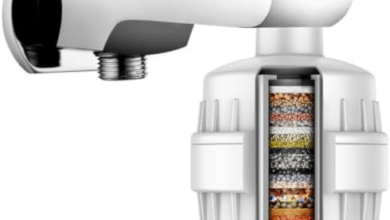In our modern world, receipts play a pivotal role in documenting transactions and maintaining financial records. One crucial element of a receipt that often goes unnoticed is the reference number. This article aims to shed light on the significance of the reference number on a receipt and its various applications. Whether you’re a conscientious shopper, a business owner, or just someone who values keeping track of expenses, understanding the reference number’s placement and importance can greatly benefit you.
The Anatomy of a Receipt
Before delving into the specifics of the reference number, let’s take a moment to understand the essential components of a receipt. A standard receipt contains various details such as the date of the transaction, the name and address of the business or store, the items purchased, their respective prices, and the total amount paid. Among these, the reference number stands out as a unique identifier that holds valuable information.
Unveiling the Reference Number
What is a Reference Number?
The reference number on a receipt is a distinctive alphanumeric code assigned to each transaction. It serves as a link between the transaction and the records kept by the business or store. This code enables quick and accurate retrieval of transaction details when needed, making it an indispensable tool for both customers and businesses.
The Placement of the Reference Number
Typically, the reference number can be found in a prominent location on the receipt. It might be located near the top, close to the transaction date, or at the bottom along with other transaction details. This strategic placement ensures that the reference number is easily accessible and can be quickly located whenever required.
Importance of the Reference Number
Efficient Customer Service
Imagine you need to return a purchased item or inquire about a specific transaction. Providing the reference number expedites the process, allowing customer service representatives to access the exact details of the transaction in question. This streamlined approach not only saves time but also enhances customer satisfaction.
Accurate Record-Keeping
For businesses, the reference number plays a crucial role in maintaining accurate records. It helps in categorizing and organizing transactions, making it easier to track sales, inventory, and financial trends. This meticulous record-keeping contributes to better decision-making and improved business operations.
Resolving Discrepancies
In the event of a dispute or discrepancy, the reference number serves as a reference point to cross-check details. It ensures that both customers and businesses have a clear record of the transaction, minimizing misunderstandings and disputes.
Utilizing the Reference Number
Tracking Purchases
As a shopper, keeping track of your purchases can be challenging, especially when dealing with multiple receipts. The reference number simplifies this process by providing a unique identifier for each transaction. You can easily correlate your purchases with your records, aiding in budgeting and expense management.
Online Transactions
In the digital age, online transactions have become commonplace. The reference number remains equally significant in this context. When making online payments, the reference number helps verify the transaction’s success and serves as a reference for any future inquiries.
The reference number on a receipt might seem like a small detail, but its importance cannot be understated. It serves as a bridge between transactions and records, benefiting both customers and businesses. Whether it’s for efficient customer service, accurate record-keeping, or resolving discrepancies, the reference number plays a pivotal role in ensuring smooth and transparent transactions.
how can i learn how to doodle
Learning how to doodle can be a fun and creative process. Doodling is a form of spontaneous drawing that doesn’t require any special skills or materials. Here are some steps to get you started:
- Gather Your Materials:
- You don’t need fancy supplies to start doodling. A plain piece of paper and a pen or pencil will suffice. If you want to add some color, you can use colored pencils or markers.
- Find Inspiration:
- Look for inspiration in your surroundings, online, or in books. Observe other people’s doodles and find styles that you like. Doodling can take many forms, from simple shapes and patterns to more complex designs.
- Start Simple:
- Begin with basic shapes like circles, squares, triangles, or squiggly lines. Practice drawing these shapes to get comfortable with your pen or pencil.
- Experiment with Patterns:
- Doodling often involves repeating patterns and designs. Try filling in shapes with patterns like dots, stripes, swirls, or hatching. Experiment with different textures and shading techniques.
- Explore Different Subjects:
- Doodling can be about anything you like. It could be animals, plants, objects, abstract designs, or even words and letters. Choose subjects that interest you and doodle them.
- Practice Regularly:
- Like any skill, doodling improves with practice. Set aside some time each day or week to doodle. The more you practice, the more confident you’ll become.
- Learn from Others:
- Watch tutorials and videos of artists who share their doodling techniques. You can find plenty of tutorials on platforms like YouTube or social media. Pay attention to their methods and incorporate what you learn into your own doodles.
- Use References:
- If you’re struggling to draw something specific, don’t hesitate to use references. You can find photos or images online to guide your doodles.
- Embrace Mistakes:
- Doodling is about being spontaneous and creative. Don’t worry too much about making mistakes. Mistakes can often lead to interesting and unique doodles.
- Add Color (Optional):
- If you want to add color to your doodles, experiment with colored pencils, markers, or watercolors. Color can make your doodles more vibrant and eye-catching.
- Share and Seek Feedback:
- Share your doodles with friends, family, or online communities. Constructive feedback can help you improve your skills and get new ideas.
- Enjoy the Process:
- Doodling should be a relaxing and enjoyable activity. Don’t put too much pressure on yourself to create perfect doodles. Let your creativity flow and have fun with it.
Remember, there’s no right or wrong way to doodle. It’s all about expressing yourself and having a good time. Over time, you’ll develop your own unique doodling style that reflects your personality and creativity. So, pick up that pen or pencil and start doodling today!




